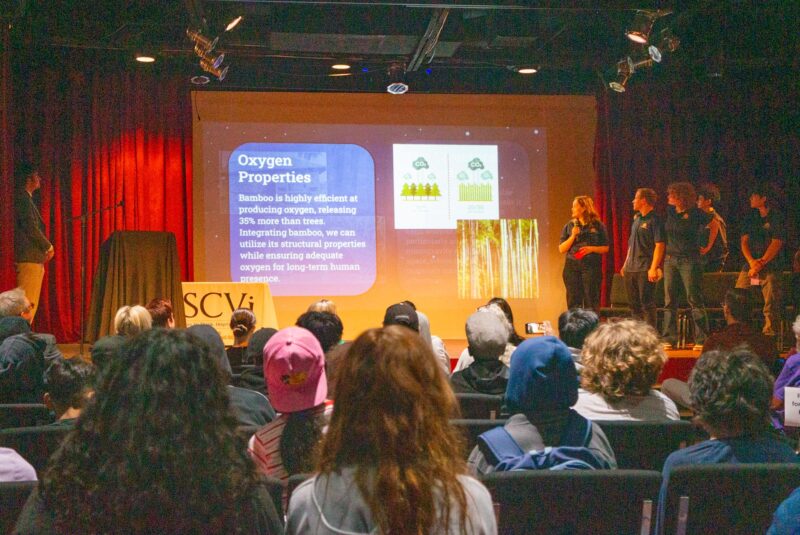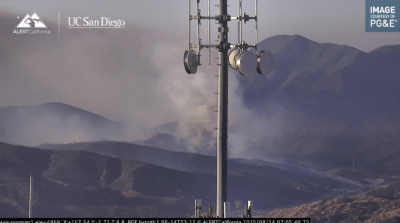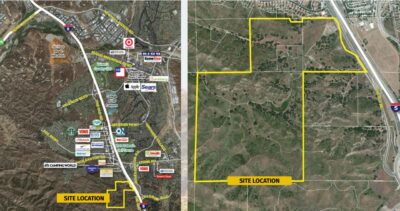If you could send an experiment to the International Space Station, what experiment would you design?
That’s the question Santa Clarita Valley International Charter School students are challenged with, through the Dream Up to Space program, a place where they can let their curiosity take hold and their dreams can reach beyond the stars.
The members of Team Bamboo, a group made up of seven SCVi students ranging from 7th to 12th grade, set their minds on sending something on the ISS that would push the boundaries of space agriculture.
Kara Chan, Madi Fanning, Arielle Mercado, Wyatt Nemeth, Jonah Onder, Quinn Rigdon, and Sergio Vasquez Rios explored how microgravity affects the germination of Bengal bamboo, which is also known as bambusa tulda in scientific terms.
To successfully send their experiment up to space, the students endured many months of preparation, including learning how to compose a proposal, the fundamentals of space exploration, and scientific experimentation for a chance at the unique opportunity.
On Thursday, in the charter school’s theater, students, staff, and representatives for local dignitaries trickled into congratulate Team Bamboo during a special award ceremony and presentation.
“Aerospace is an industry that has been tremendously important in the culture and the economy of Southern California. Almost 2,000 people in the Santa Clarita Valley are employed one way or another in the aerospace industry,” SCVi School Director Chad Powell said during opening remarks. “We are very happy that we are preparing our learners with the skills and background that they may be able to use to enter in the aerospace industry.”
He thanked representatives for Rep. Geroge Whitesides, D-Agua Dulce, Sen. Suzette Valladares, R-Acton, Assemblywoman Pilar Schiavo, D-Chatsworth, and Los Angeles County 5th District Supervisor Kathryn Barger, who were present to recognize the student scientists’ achievements.

The Dream Up to Space program has worked closely with SCVi for approximately nine years now, and “one of the best things about this program is that it invites learners at nearly every single grade level. Every learner at our school has an opportunity to take part in a truly groundbreaking opportunity at quite literally the highest levels of experimentation,” said Daniel Prasch, SCVi’s science and aerospace facilitator.
This year, numerous entries were reviewed through intriguing hypotheses for the opportunity to send their experiment to space with the ISS, but Team Bamboo’s inspiring and ingenious hypothesis was selected by the board, he added.
Through their research, the students explored the growth characteristics of the bamboo and its potential viability in a microgravity setting with the goal of reducing transportation costs for future space missions with the low weight of the plant.
This could possibly create a more sustainable and cost-effective habitat for future exploration, the students said during the presentation for an audience filled with their classmates, parents and community members.
Bambusa tulda was the selected plant to send out to space because of its rich nutrients and the higher rate of oxygen production, which is 30% higher than trees on Earth, making it beneficial for long-term human presence in space, the students said.
“Since October our scientists have been working tirelessly to find just the right combination of seeds, moisture and substrate in order to affect the greatest yield in their bamboo seedlings,” Prasch said. “If there ever was a thing to learn from this experiment, it is to walk away with a greater understanding of the meaning of patience, persistence, and tenacity.”
On April 21 at 1:15 a.m. a rocket ascended toward the night sky carrying Team Bamboo’s bambusa tulda 250 miles high, accelerating to 17,400 mph, ready to test the students’ hypothesis and delivered it to the orbiting ISS.
As the presentation came to a conclusion, the students shared their final remarks and what they learned from the process.
In their own words, they said the experience allowed them to form new friendships with one another, explore the possibilities of aerospace-focused careers, and test their educational limits.









